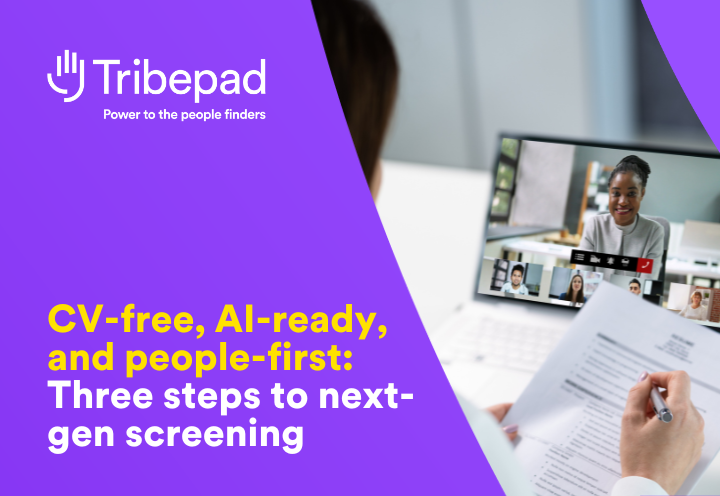The recruitment industry is a big fan of acronyms, and ATS is one you’ll see everywhere.
- But what is an ATS?
- And do you need one?
- And if you do, how do you know which ATS to consider?
Keep reading and we’ll answer those questions…
So, what is applicant tracking software?
Applicant tracking software is technology that tracks applicants and candidates through the recruitment process, from application to (hopefully!) hire. It’s a way to keep track of job applicants as they move through your hiring processes.
When you read/hear about recruiting software, hiring software, talent acquisition tech, and so on, these have applicant tracking functionality at their heart.
(ATS can mean either applicant tracking software or applicant tracking system interchangeably. They’re both the same thing.)
Applicant tracking software can range from super simple—more like a system of record—to enormously complex. At this higher end, applicant tracking systems often move beyond applicant tracking functionality to include other snazzy stuff like candidate relationship management (CRM).
There are two main categories of ATS: standalone tools versus add-on modules within an overarching HR management system (HRMS).
There are pros and cons to both. But given the importance of recruitment, and today’s continuing hiring challenges, many organisations prefer purpose-built standalone systems over add-ons. Typically the thinking is that dedicated systems have better, more robust functionality that’s designed for recruitment, where add-on modules tend to be more limited.
But let’s take a step back. If you’re a growing business, do you even need an ATS in the first place?
Do you need an ATS in recruitment?
Not always. Many SMEs use recruitment tracking spreadsheets and have no issues.
But there is a cut-off point where recruitment spreadsheets hamper growth. Spreadsheets’ main weaknesses are:
- Hard to collaborate
- Hard to search
- Reactive
- No candidate comms
- No reporting
We spoke recently to Hung Lee about when SMEs should switch from spreadsheets to software.
Alan Walker, Co-Founder of Udder, reckons most SMEs should invest into an ATS when they’re hiring 20 to 40 people annually. But every organisation is different. If you’re only getting a handful of applicants for each role, that’s a totally different story from if you need to sift through hundreds.
Watch the webinar: Hung Lee and three small business recruiters talk about when SMEs should move from spreadsheets to software.
If you’re small and plan to stay small, you might be fine with spreadsheets forever. Or if your organisation uses a central HR system, the add-on recruitment module might be fine. But ultimately, most scaling organisations will eventually need applicant tracking software to support their growth plans.
So then the question becomes… which applicant tracking software?
Choosing a small business ATS
Organisations tend to wait a little too long before taking the leap to invest into applicant tracking software, by which time you’re already slammed. You’ve barely got enough time for recruitment, let alone spare time for research. Especially given the overwhelming scale of the small business ATS market.
But don’t panic. You don’t need to boil the ocean. Small businesses typically don’t need heaps of functionality to make a vast difference to your recruitment outcomes.
That said, there are a few things worth thinking about:
- Future growth plans
We speak to lots of organisations who come to Tribepad because they’ve outgrown their existing ATS. Ideally, one implementation should last you 3-5 years at least. If not forever, if your providers invest in continued development. (We’ve had customers with us since our inception in 2008, for example).
Give some thought to your future plans and make sure you’re not choosing something that’s too basic.
- Vendor creds
Many small business ATS providers are tiny teams that provide fairly static tech and not much else. If you’re a 50-person SME without rapid expansion plans, that might be absolutely right for you.
But a provider with a bigger commercial footprint, development team, and infrastructure often makes more sense. Especially if you’re planning to grow.
- Nice-to-have extras can be really nice-to-have
Small business recruitment software usually starts out pretty basic. Many are little more than a spreadsheet pulled into a prettier dashboard with tracking functionality.
And honestly, that is useful.
But for the same sort of time and cost investment, you could get software that has a heap of thoughtful extra bits, like email and SMS, end-to-end automation, templates, onboarding, and so on. (Read why onboarding could be SMEs’ superpower).
If you’re spending time and money to upgrade recruitment software anyway, why not get more bang for your buck?
Introducing Tribepad Gro
Tribepad Gro is ready-built, ready-to-go recruitment software for growing teams. With all the fundamental features you need to recruit well as you scale, Tribepad Gro makes it easier and faster to find, hire, and onboard the best people.
It’s plug-and-play, no-hassle talent tech that’s easy to implement whether you’re coming from spreadsheets or from a more basic ATS.
Ready to take your recruitment to the next level? Book a demo of Tribepad Gro.




